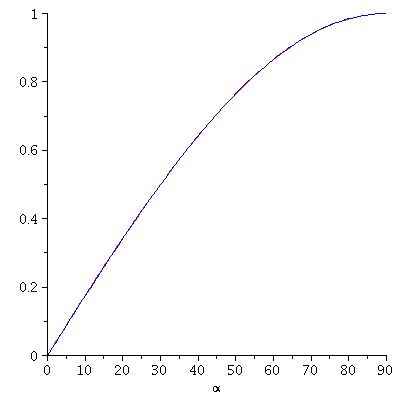April 11, 2011
In the text known as the Maha Bhaskariya (c. 600 CE), the classical-period
Indian mathematician Bhaskara developed the following approximation to
the sine function (given for an angle in degrees, with the radius of the
circle set to
MONT 109N -- Bhaskara's Approximation of the sine
April 11, 2011
In the text known as the Maha Bhaskariya (c. 600 CE), the classical-period
Indian mathematician Bhaskara developed the following approximation to
the sine function (given for an angle in degrees, with the radius of the
circle set to ![]()
![]()
| (1) |
![]()
Here are Bhaskara's approximation for the sine of 23 degrees,
and a more accurate approximation using a different modern
method:
![]()
| (2) |
Note that the Bhaskara formula gives the value correct to 2 decimal places
In fact if we plot both formulas on the interval from 0 to 90 degrees, it is difficult
to tell that we are looking at two different functions -- the agreement is close
enough that hardly any difference is apparent at the resolution of the graphics:
![]()
 |